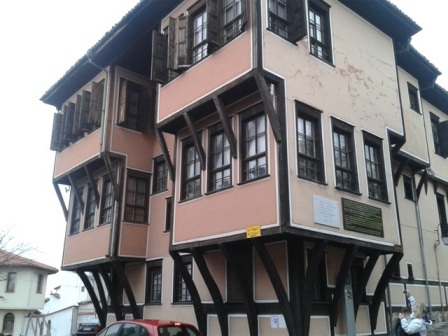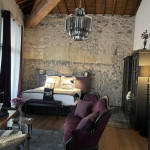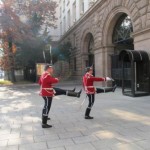There’s a lot of “awesome” about these days. Handbags, vegetable fritters, sneakers all seem to earn the label. So when Bulgaria recently served me two slices of genuine ‘awesome’, I thought it was worth documenting.
I’ve come to the country’s Rhodope mountain region in southern Bulgaria. The country’s Black Sea resorts are already known to many British travellers but these wild mountain regions are rarely visited by non-Bulgarians.
On the first day we head for a bridge in the mountains 30 kilometres from the ski town of Chepelare . The bridge is described in our tourist literature as “wonderful.” Valery, our Bulgarian guide, isn’t happy with this title. “No, no, not wonderful,” he frowns, searching for the word in his vast English vocabulary. I was ready to be disgruntled. After the bumpy ride on mountain roads and a subsequent clamber down a rocky, steep path of high steps, uneven flagstones and big potholes, this bloomin’ bridge had better be wonderful. “Wonder!” declares Valery, suddenly inspired. “The translation is the ‘Wonder Bridge.’”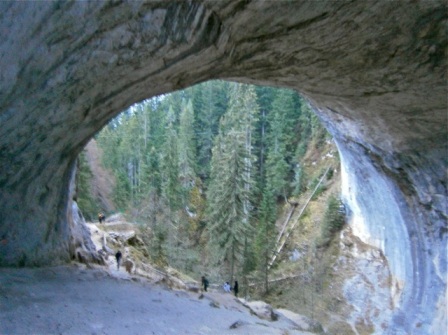
A few seconds later, we round a bend in the path and well, there it was: both wonderful and a wonder. This immense natural stone bridge, formed from marble caves which at one point collapsed after having been delved by the river for thousands of years is, yes, awesome. I haven’t been quite so astonished by what nature can get up to, all by itself and with no help from us, since the Grand Canyon. Like other spectacular sights in Bulgaria, the Wonder Bridge is relatively uncelebrated and unannounced on the barely-existent tourist circuit. There’s just a cosy wooden hut serving as a cafe at the top of the path.
More “awesome” comes in the form of two vast caves that are reached by another meandering ride through autumn forests, a dramatic gorge and alongside mountain streams, many of which are spanned by ancient stone bridges that date from Roman times.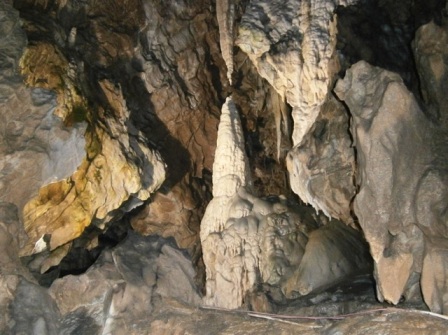
Yagodina Cave is a vast 8 kilometre labyrinth of tunnels lined with stalactites, stalagmites of all sizes and some extraordinary shapes, including rippling curtains and giant bear claws, in glistening, moist, white stone. Small bats hang in crevices, colossal rock formations weighing several tons loom overhead. Bulgarians come to the bigger caves for wedding parties.
A drive through the fierce, perpendicular walls of rock that line the Trigrad gorge takes us to the nearby Devil’s Throat – another cave that Valery tells us is the site of the Orpheus legend. This is the mouth of Hades into which he descended in search of his beloved Eurydice. I’m baffled. What was Orpheus doing in Bulgaria? But my geography is at fault. The Greek border is just a few miles away, and within minutes of stepping inside the Devil’s Throat it is easy to see why the ancients would have thought that it led to Hades. Where the Yagodina Cave is a long, mysterious, serpentine walk through the heart of a mountain, the Devil’s Throat is a true “hall of the mountain king’ – a vast space so high that the Alexander Nevsky Cathedral in Sofia would fit easily inside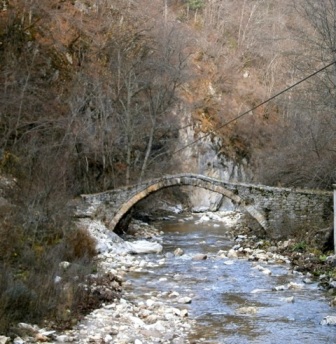
We pass through Pamporovo – a ski resort that is like a ghost town in these autumn weeks while it holds its breath waiting for the snow to fall. The town has been custom-built for the ski trade. What it lacks in quaint charm, it gains in convenience. Regular bus service from Plovdiv airport makes it an easily accessible and very cheap ski resort with ample green runs so probably more adapted to less hard-core skiers. There are numerous hotels – some quite luxurious like the Hotel Orlovetz which, thanks to the exchange rate, offers double rooms, breakfast dinner and ski pass for £55 per person per day. The Orlovetz has a spotless spa, small indoor pool, steam room and sauna. I get a full body massage for just £30 for an hour. A few miles beyond Pamporovo, we’re back in traditional Bulgaria in the town of Shiroka Laka, a lovely old town, cupped in a gentle valley and famed for its traditional two-storyed Rhodope houses, with their overhanging upper floor, that line the river. Once again, I discover bargain Bulgaria in the form of the luxurious Hotel Shiroka Laka just walking distance above the centre of town and with vast, thickly carpeted rooms and views onto the valley. Suites average £50 a night.
Getting to Plovdiv:
Ryanair has 3 flights a week to Plovdiv from London, Stansted. The city itself is worth a visit. It lays claim to the title of oldest city in Europe and like Tallinn in Estonia and Bergamo in Italy, has a very quaint and ancient old upper town with some fascinating Ottoman houses perched high above the busy modern city.
A Bulgarian guide who can drive is a great asset should you want to venture out into these wilder areas. Valery, our excellent guide, charges around €50 a day plus any expenses: http://guidesbg.com/viewmember.php?id=105
Main image : (c) Janette Griffiths.

